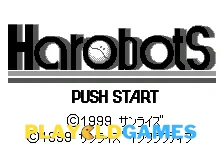Recommended
Featured Games
OTHELLO for Game Boy: A Brief History
OTHELLO, also known as Reversi, is a classic board game that has been played for centuries. The objective of the game is to have more pieces of your color on the board than your opponent at the end of the game. The game is played on an 8x8 board and each player has 32 pieces that are black on one side and white on the other.
In 1990, a version of Othello was released for the Nintendo Game Boy. The game was developed by HAL Laboratory and published by Acclaim Entertainment. The Game Boy version of Othello features both single player and two player modes.
Gameplay
The gameplay in OTHELLO for Game Boy is simple and intuitive. Players take turns placing their pieces on the board with the goal of flipping their opponent's pieces to their own color. Players can flip their opponent's pieces by placing their own piece adjacent to it and trapping it between two of their own pieces. The game ends when the board is full or when neither player can make a move.
Features
The Game Boy version of OTHELLO features several gameplay options, including different difficulty levels for single player mode and the ability to adjust the speed of the computer opponent. The game also includes a two player mode that allows two players to play against each other using the same Game Boy console.
Legacy
OTHELLO for Game Boy is still regarded as one of the best versions of the game ever released. The game's simple and addictive gameplay has stood the test of time and the game remains popular among both casual and hardcore gamers. The game has since been released on various other platforms, including mobile devices and modern gaming consoles.
Overall, OTHELLO for Game Boy is a classic game that has stood the test of time. Its simple gameplay and intuitive controls make it a perfect game for both casual and hardcore gamers alike.
How to Play OTHELLO on Gameboy
Objective
The objective of OTHELLO is to have the majority of your color pieces on the board at the end of the game.
Gameplay
The game is played on an 8x8 board, with each player starting with two pieces on the board in a diagonal pattern. The black player goes first.
To place a piece, you must choose a square adjacent to an opponent's piece where you can "sandwich" at least one of their pieces between your new piece and another of your pieces on the board. This "sandwiching" flips the opponent's piece to your color. If there are no valid moves available, you must pass.
The game ends when all squares are filled, or when neither player can make a valid move. The winner is the player with the most pieces on the board.
Scoring
In OTHELLO, the score is based on the number of pieces each player has on the board at the end of the game. The player with the most pieces of their color on the board wins.
Difficulty Levels
OTHELLO on Gameboy offers three different difficulty levels to choose from: Easy, Normal, and Hard. The difficulty level determines how challenging the AI opponent will be to play against.
Multiplayer
OTHELLO can also be played with two players, where each player takes turns placing their pieces on the board. The same rules apply as in the single-player version.
Tips and Strategies
- Control the center of the board - this gives you more options for sandwiching your opponent's pieces.
- Try to create long chains of your pieces on the board, as these are harder for your opponent to sandwich.
- Don't be afraid to sacrifice some of your pieces if it means you can capture more of your opponent's pieces.
OTHELLO Tips
1. Corner Pieces are Key
Corner pieces are crucial in Othello, as they are the most stable pieces on the board. By occupying the corners, you limit your opponent's ability to flip your pieces and gain control of the board.
2. Control the Center
Controlling the center of the board is also important, as it gives you more mobility and strategic options. Aim to place your pieces in the center of the board early on to establish control.
3. Look Ahead
Don't just focus on the current state of the board - think ahead to potential moves and outcomes. Consider the consequences of each move and how it might affect the board in the future.
4. Be Patient
Othello is a game of strategy and patience. Don't rush to make moves or capture pieces. Take your time to plan out your moves and consider all possible options.
5. Don't Give Up the Edge
Once you have control of the edges of the board, don't give them up easily. These edges are more vulnerable and can be quickly flipped by your opponent, giving them an advantage.
6. Use Your Opponent's Moves to Your Advantage
Pay attention to your opponent's moves and use them to your advantage. Look for opportunities to trap their pieces or set up your own pieces for future captures.
7. Play Both Sides of the Board
Don't just focus on one side of the board. Make sure to play both sides and establish control across the entire board. This will give you more options and make it harder for your opponent to gain an advantage.
8. Practice, Practice, Practice
Like any strategy game, practice is key. Keep playing Othello to develop your skills and improve your strategy. You can also play against different opponents to learn new approaches and tactics.
9. Stay Focused
Finally, stay focused and don't get distracted during the game. Othello requires concentration and attention to detail. Avoid making careless mistakes and stay focused on your strategy to win.



